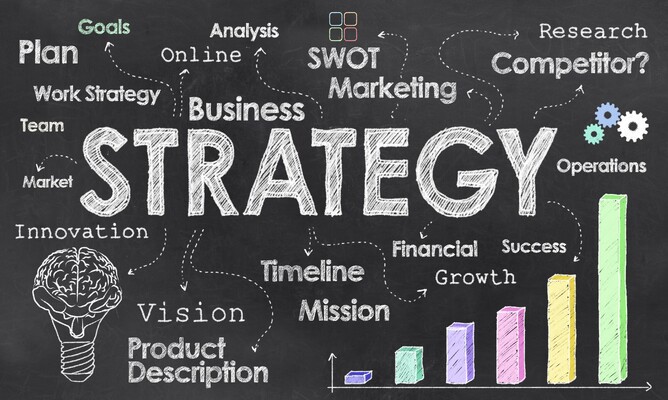No matter how much you enjoy the relaxed Northland lifestyle, it’s well worth focusing on business strategy development. After all, if your business is running smoothly, you’ll have more time to spend on the things you love doing - and with less stress in the process.
Benefits of business strategy development
Here are some of the benefits of developing a business strategy:
Clear direction: Defining a business strategy means you’re setting a clear direction for your business. It’s important that this is communicated to the whole team in an engaging way, so everyone is working towards a common goal.
Increase satisfaction: By giving your team a common goal to work towards, motivation and job satisfaction may be increased. In turn, happier employees who are diligent in their work also provide a better customer experience, resulting in improved customer satisfaction.
Measure success: By defining your goals, and making them measurable, you’ll have some clear targets to work towards, and can measure your progress against them. Conversely, without goals and measures, a business can flounder around, move backwards, or even fail.
Compete in a way that stands out: As part of the business strategy development, business leaders should do some competitor analysis. This can help you create a plan that’ll help you differentiate your business from its competitors.
Navigate uncertain times more easily: In today’s challenging business environment, it’s very important to have a strategy that helps you identify the strengths, weaknesses, opportunities, and threats to your business. That way you are well armed before a new business challenge arises – and can also adapt more nimbly to any opportunities that present themselves.
What sorts of things should you include in a business strategy?
Your business strategy development process should include elements of where you take stock of where your organisation is at now – and then create some goals for the future. Here are some of the factors to consider:
Strengths and weaknesses: Review the internal aspects that your organisation is strong in, and identify areas of weakness.
Opportunities and threats: External factors to take into consideration include political, economic, social, and technological aspects. This part of your strategic plan may even include some risk analysis and scenario planning.
Competitor analysis: How does your organisation compare to its competitors? Where does it fit into the marketplace? Is this where you want to be? Or would you prefer to make some changes to your competitive offering? This could be in terms of pricing, quality, service levels, products, target market, and so on.
Vision and values: Why do you do what you do? What are you passionate about?
Goals: Set clear and measurable goals for at least the next 12 months.
Stakeholders: What are the needs of your organisation’s stakeholders? Are your goals in line with their expectations and needs?
Create a plan to achieve objectives: What do you need to accomplish in order for the organisation to achieve its goals? Some examples include:
Increase market penetration: Selling more of what you already have to your existing target market.
Improve customer acquisition and retention: Putting more effort into retaining existing clients.
New products/services: Developing new offerings relevant to your current target market.
New target market(s): Seeking new markets – either with existing products/services, or create new offerings that’ll appeal to them. The new target market could be a new geographic area, or a customer base with different needs and motivations to your existing customers.
Technological advantages: Could you leverage technology in a way that’ll grow your business?
Define targets: Whatever you include in your plan, it’s important that you’re able to measure your progress – and do so regularly.
Do you need help with your business strategy development?
If you agree that it would be helpful to define and document a business strategy – but you don’t know where to start, or simply don’t have the resource in-house to pull it all together, we can help you.
Not only that, but we can help you with tools that make it easier to implement your plan by making your business processes more efficient and cost effective.

